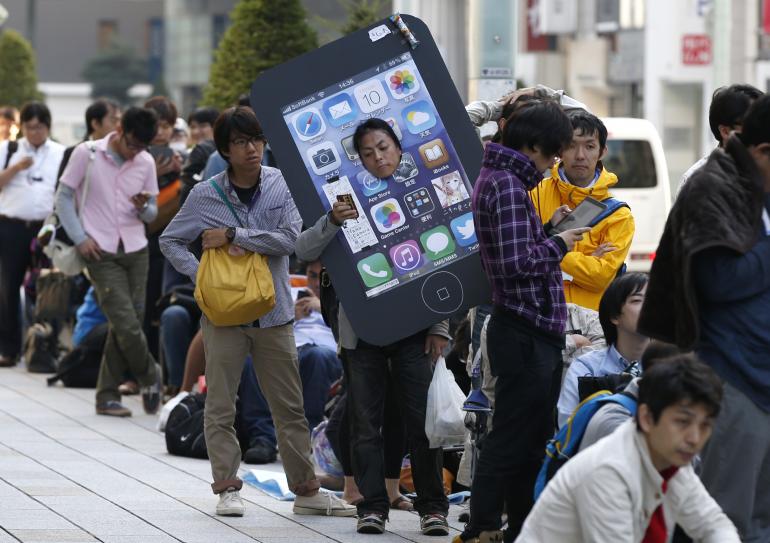
COSTA RICA EXTRA – Ever since Samsung created the so-called “phablet” category with the first Galaxy Note in 2011, the big-screen smartphone has remained a relatively niche product. But that could soon change as Samsung re-loads its product line and Apple looks to submit its entries next week.
If numerous component leaks are to be believed, we can expect Apple, Inc. (NASDAQ:AAPL) to announce a 4.7-inch iPhone 6 as well as a larger 5.5-inch model at its media event Sept. 9. Samsung is already leading the charge to put larger screens in our pockets – and today introduced its Galaxy Note 4, a 5.7-inch device that looks like a flashy spaceship when held next to a 4-inch iPhone screen.
Fundamentally a phablet is a subset of the smartphone population, not a tablet. The screen is larger than a phone’s, usually between five and seven inches, but it still relies upon an over-the-air connection to make and receive phone calls. In the second quarter of 2014, a mere 4.7 percent of all smartphones sold were phablets, according to Strategy Analytics.
These numbers are bound to change when Apple unveils its new device. Apple has a history of entering a market late with a much-better product that ends up transforming the category. There were plenty of MP3 players before the iPod, tablets before the iPad and even smartphones before the iPhone. So, the question remains, can Apple make phablet users out of the rest of us and does that help, or hurt, Samsung?
Aside from raw sales data, Jeff Orr from ABI research says there’s little clear-cut data on who is buying big-screen phones. Anecdotally, older folks appear to like them for increased screen size. Younger college-aged types like them becuase they rarely use their phones as phones. And who wouldn’t prefer to read an e-book on a device approaching paperback dimensions?
A small population of existing iPhone customers will likely upgrade to a larger device according to a poll of 426 iPhone users conducted Wednesday by Qriously. When asked, “would you buy a large-screen iPhone if released?” 31 percent of current iPhone owners said they would; 42 percent said “no” and 27 percent answered “not sure.”
But Samsung’s phablet strategy is as much about foreign markets as the U.S. In a survey conducted by market research firm Jana, we learn that there is huge interest in smartphone screens five inches and larger in developing markets around the world. Polling 1,386 smartphone users from nine different countries, data from eight countries named the most desirable smartphone screens as those that are five inches, 5.5 inches, or larger.
Users in developing markets might also be attracted to phablets because there might not be a big install base for contemporary platforms – your Windows, your OS X. A nice Android or iOS phablet presents a nice standalone computing device for much less than the price of a full-blown computer. You pay a penalty for the increased screen size and the battery to power it, however.
It is not surprising that Apple would be among the last smartphone manufacturers to enter a phone-tablet-hybrid-sized device in the market. The company’s mobile strategy has always had an element of “wait and see” to it, but when it actually does decide to execute on something, it goes big. Consider numerous Android features that were Android-only mainstays before Apple implemented equivalents in iOS 5.
Consider the fact that while a number physically huge phones have been available for a while, we’re only just now expecting to see Apple’s take on a big smartphone. Apple design gury Jony Ive once extolled the virtue of a comparatively small screen. “By making the screen taller, but not wider, you can see more of your content, but still comfortably use it with one hand,” Ive said in a promotional Apple video. Next week we’ll see if he’s changed his tune.
Article by Ibtimes







